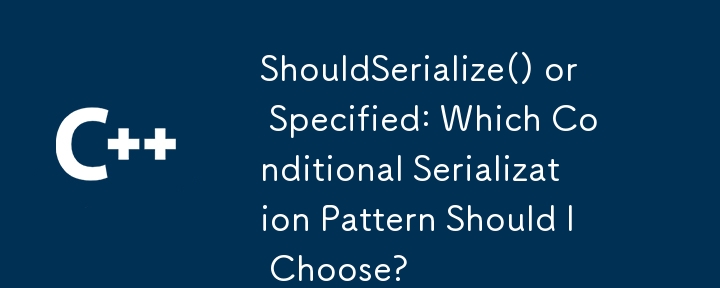Found a total of 10000 related content

How do I optimize HTML5 Canvas performance for complex animations?
Article Introduction:This article explores optimizing HTML5 Canvas performance for complex animations. It details strategies to minimize redraws (partial updates, double buffering, caching), employ efficient drawing techniques (batching, optimized data structures, image
2025-03-12
comment 0
1191

How do I use the HTML5 Canvas API for drawing graphics and animations?
Article Introduction:This article details the HTML5 Canvas API for creating 2D graphics and animations. It covers setup, drawing shapes, styling, animation using requestAnimationFrame(), and optimization techniques like minimizing redraws and using off-screen canvases.
2025-03-12
comment 0
382

Creating animations on HTML5 canvas
Article Introduction:Three points to note when implementing smooth HTML5Canvas animation: 1. Use requestAnimationFrame to control the frame rate to avoid the rhythmic out-of-synchronization problem that may be caused by setInterval or setTimeout; 2. Encapsulate animation elements into entity objects, manage update and draw processes uniformly, and improve logical clarity and scalability; 3. Optimize the redraw area, and only clear and redraw the changing parts to reduce the burden on the GPU, but pay attention to recording the old position and hierarchical relationship.
2025-07-08
comment 0
216

Drawing Graphics and Animations using HTML5 Canvas
Article Introduction:HTML5Canvas is suitable for web graphics and animations, and uses JavaScript to operate context drawing; ① First add canvas tags to HTML and get 2D context; ② Use fillRect, arc and other methods to draw graphics; ③ Animation is achieved by clearing the canvas, redrawing, and requestAnimationFrame loops; ④ Complex functions require manual processing of event detection, image drawing and object encapsulation.
2025-07-05
comment 0
636

Applying transformations and animations using HTML5 canvas context.
Article Introduction:The key to Canvas animation and transformation is to understand context state management. 1. All transformations (such as rotation, scaling, translation) act on the entire canvas context rather than a single object; 2. Use ctx.save() and ctx.restore() to save and restore the context state to avoid mutual interference between transformations; 3. The animation needs to update the state and clear the old frame in the requestAnimationFrame loop; 4. The order of compound transformations is crucial, such as first translation and then rotation to achieve rotation around the center point; 5. To ensure accuracy, the animation increment should be calculated based on the time difference and the context state should be reset in time.
2025-07-03
comment 0
186

HTML5 Canvas Tutorial: An Introduction
Article Introduction:Key Takeaways
HTML5 Canvas is a powerful technology that allows developers to draw graphics and create animations directly within a browser using JavaScript. The canvas element is defined in HTML code using width and height attributes, and its rea
2025-02-22
comment 0
459

How to use the canvas element in HTML?
Article Introduction:How to draw graphics and implement animations in HTML5 Canvas? 1. Insert tags in HTML and set id and size; 2. Get the canvas element through JavaScript and create a 2D drawing context; 3. Use fillRect, strokeRect, arc and other methods to draw shapes; 4. Use fillText to add text and drawImage to draw pictures; 5. Use clearRect to clear the canvas and combine requestAnimationFrame to achieve animation effects. Master these basic operations and start drawing and animation development using Canvas.
2025-07-10
comment 0
249

What is the canvas element in HTML5?
Article Introduction:The HTML5 element is a blank canvas for drawing graphics using JavaScript on a web page. It does not display anything by itself and must draw shapes, text, images and animations through scripts. To use, first add a tag with id, width and height in HTML; then get the element through document.getElementById() and call .getContext('2d') to get the drawing context; then draw the content using the context method. It can be used to draw shapes, render text, display images, create animations, and build games. It should be noted that canvas is based on pixels, lacks built-in event processing and barrier-free support, and performance is also affected by complexity.
2025-07-13
comment 0
327

Image Manipulation with HTML5 Canvas: A Sliding Puzzle
Article Introduction:Core points
The HTML5 canvas element allows native integration of multimedia content, including line drawings, image files, and animations, into web pages, and can be used to create sliding puzzle games.
The canvas drawing is performed through a context that is initialized by the JavaScript function getContext(). The drawImage() function in JavaScript is used to display images on canvas, and different parameter options allow resizing images and extracting image parts.
The game logic of the sliding puzzle involves creating a two-dimensional array to represent the board. Each element is an object with x and y coordinates that define its position in the puzzle grid. checkerboard
2025-03-01
comment 0
1000

What's New in HTML 5.1
Article Introduction:HTML5.1: A new era of web development
Explore the creative animation production of HTML5 and watch our screen recording tutorial “Create animations with HTML5 Canvas”.
Core points
HTML 5.1, as the latest version of HTML, introduces many new features and improvements, including creating context menus using menu and menuitems elements, creating collapsible content using details and summary elements, and three new form input types: month, week, and datetime -local.
This version also includes the ability to implement responsive images without CSS, such as: the srcset image attribute is used to list multiple alternative image sources;
2025-02-19
comment 0
404

How to use HTML5 canvas?
Article Introduction:If you want to draw pictures, make animations or even develop mini-games on web pages, you can use HTML5 tags; 1. First add the canvas element to HTML and set the size; 2. Then get the element and its drawing context ctx in JavaScript; 3. Use ctx to draw basic graphics such as rectangles and circles; 4. Animate effects by constantly clearing and redrawing; 5. You can increase interactivity by combining event processing; you need to pay attention to issues such as resolution adaptation, performance optimization and browser compatibility, and you can also use canvas.toDataURL() to export pictures.
2025-07-14
comment 0
910


Dave The Diver: How To Catch Spider Crabs
Article Introduction:In Dave The Diver, there are some creatures that are not easy to catch. Or, catch alive that is. The spider crab is one of those very species, making it seem like the only way to bring these crustaceans back up to land is to viciously crack them up w
2025-01-10
comment 0
811

Prepare for Interview Like a Pro with Interview Questions CLI
Article Introduction:Prepare for Interview Like a Pro with Interview Questions CLI
What is the Interview Questions CLI?
The Interview Questions CLI is a command-line tool designed for JavaScript learners and developers who want to enhance their interview
2025-01-10
comment 0
1439

Soft Deletes in Databases: To Use or Not to Use?
Article Introduction:Soft Deletes: A Question of DesignThe topic of soft deletes, a mechanism that "flags" records as deleted instead of physically removing them, has...
2025-01-10
comment 0
1054



















